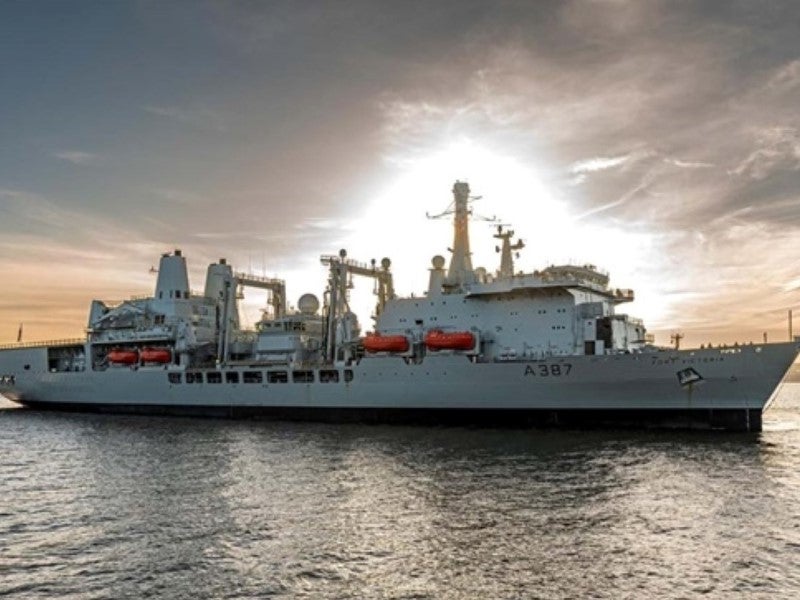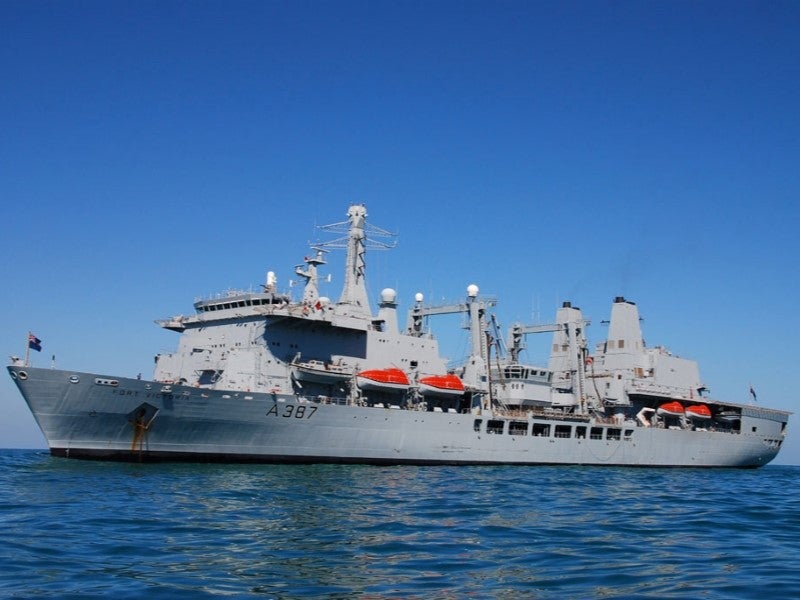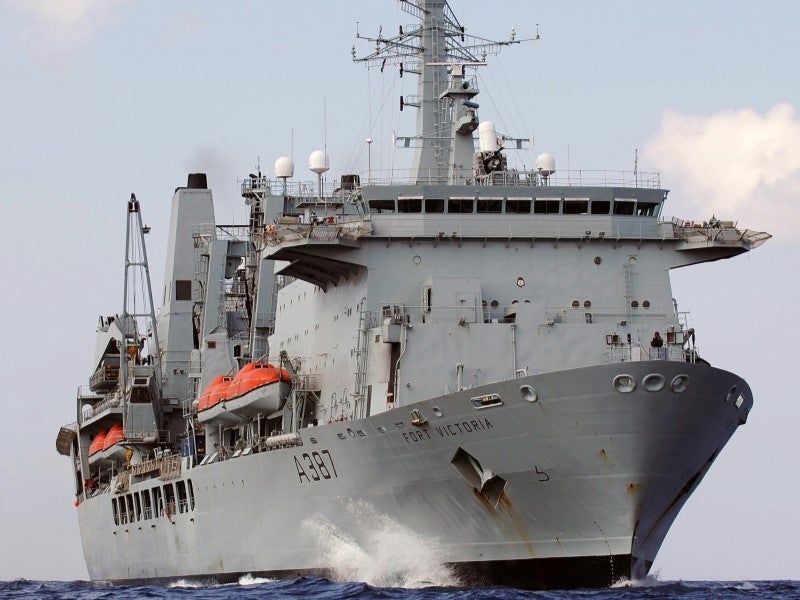The RFA Fort Victoria (A387) Fort-class vessel built by Harland and Wolff is operated by the Royal Fleet Auxiliary (RFA).
Both RFA Fort Victoria and sister ship Fort George combined the functions of a fleet support tanker and a stores support ship.
Fort Victoria was ordered in 1986 and was launched in 1990. She was dedicated in 1994 and commenced operations during the same year.
RFA Fort George was launched in 1991 and entered service in 1993. The vessel ceased operations in June 2011.
In January 2023, the UK Ministry of Defence (MOD) awarded a £1.6bn ($2bn) contract to Team Resolute, a consortium comprising BMT, Harland and Wolff, and Navantia UK, for the construction of three new fleet support ships to replace Fort Victoria.
The vessels are slated for delivery to the RFA by 2032, as part of the RFA’s fleet modernisation efforts.
Fort Victoria is in a scheduled refit package to prepare for future service, as of April 2024. The upkeep will enable her to fulfil future operations until the new ships are commissioned.
RFA Fort Victoria design and features
Fort Victoria is 204m long, has a beam of 30m and displaces 31,565t. It can carry a cargo of up to 6,250m³ of solids stores plus 12,500m³ of liquids.
RFA Fort Victoria refit details
In 2015, Fort Victoria underwent a £49.5m ($74.9m) refit, which included major overhauls to its main engines and the replacement of six diesel generators. The refit also encompassed extensive pipe and steel work, the installation of sewage and ballast water treatment plants, boiler repairs, and navigational system upgrades.
Cammell Laird secured a ten-year Through Life Support contract for the ship in 2018, which included the maintenance of main engines, propulsion and steering systems, the inspection of more than 230 side valves, and the enhancement of ballast valve operation remote controls. The work on the contract was completed in January 2020.
Replenishment systems
The four dual-purpose replenishment rigs fitted amidships enable RFA Fort Victoria to replenish two warships with both fuel and stores simultaneously. Fuel transfer is accomplished by suspending a hose from a tensioned cable, the jackstay, which runs from RFA Fort Victoria to the receiving warship.
The hose is fitted with a quick-coupling probe to mate with the receiving point on the warship. Once the hose has been connected, RFA Fort Victoria can pump fuel across to the receiving ship. During a stores transfer, the jackstay supports a ‘traveller’, a travelling hoist to which loads of up to 2t may be coupled.
As well as the main replenishment rigs, RFA Victoria is also fitted with an additional refuelling rig, called a Hudson Reel, at the stern. Stern refuelling is not as efficient as beam replenishment, but it is safer in severe weather conditions.
Helicopter handling facilities aboard RFA Fort Victoria
RFA Fort Victoria is also fitted with a two-spot flight deck, a hangar and maintenance facilities for five Sea King or Merlin helicopters. This gives the ship an enhanced capability to resupply warships in a task group by a technique called vertical replenishment (VERTREP), which involves using helicopters to ferry supplies from ship to ship.
VERTREP may be used to expedite the ship replenishing process on one of the Replenishment at Sea (RAS) rigs or to restore another vessel that does not need to take fuel onboard. The flight decks are capable of providing an emergency landing facility for the Harrier vertical take-off and landing (VTOL) aircraft.
Weapons aboard RFA Fort Victoria
RFA Fort Victoria is armed with four MSI Defence Systems DS30B gun mounting with Oerlikon KCB 30mm guns. These are 75-calibre, have a muzzle velocity of more than 1,000m a second and a rate of fire of 600 rounds a minute. They are also fitted with two Raytheon Phalanx Mk 15 20mm close-in-weapon systems (CIWS).
Countermeasures on board Fort Victoria
The ship is equipped with four Nato Sea Gnat decoy launchers or BAE Systems Shield decoy launchers to protect against anti-ship missiles. Each system contains a multiple-tube launcher capable of dispensing chaff or infrared decoys. The ship is also equipped with a Graseby towed torpedo decoy.
The ship is equipped with a Mentor electronic support measures system developed by BAE Systems. Mentor intercepts and identifies hostile radar emissions.
Sensor technologies
The ship’s radar suite comprises a Kelvin Hughes 1007 navigation radar and a Kelvin Hughes Nucleus aircraft control radar both operating in I-band. The ship is also capable of being fitted with the BAE Systems Type 996 3D air search radar operating in E and F bands.
Propulsion details
The ship is powered by two Crossley-Pielstick diesel engines, type 16 PC2.6 V 400, rated at 23,600hp, which give the ship a maximum speed of 22 knots.






